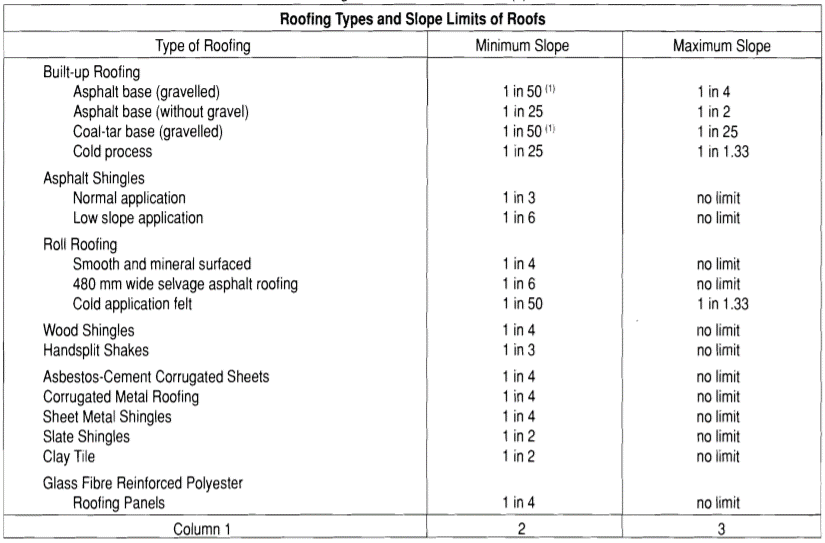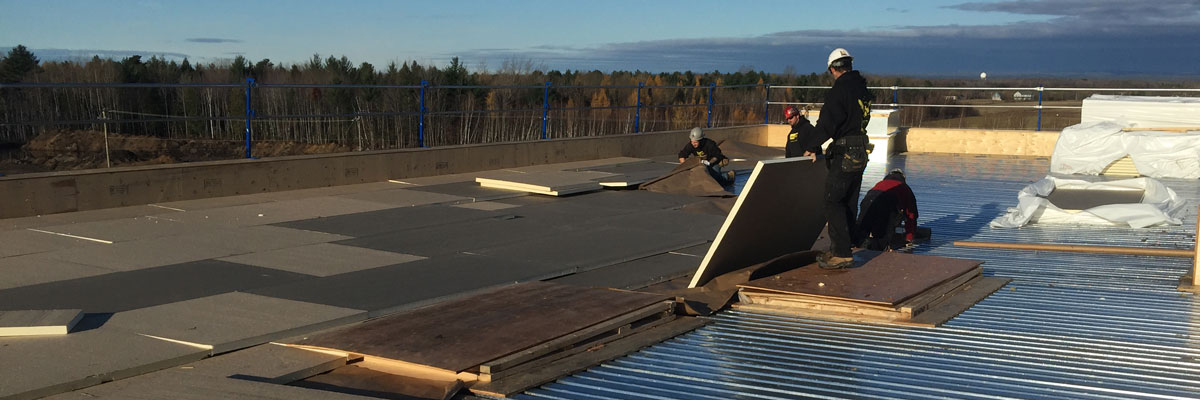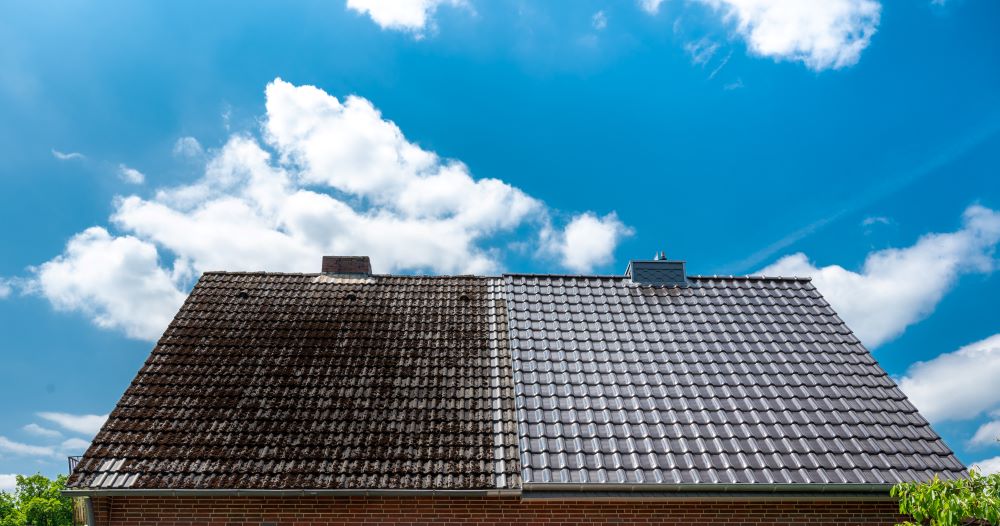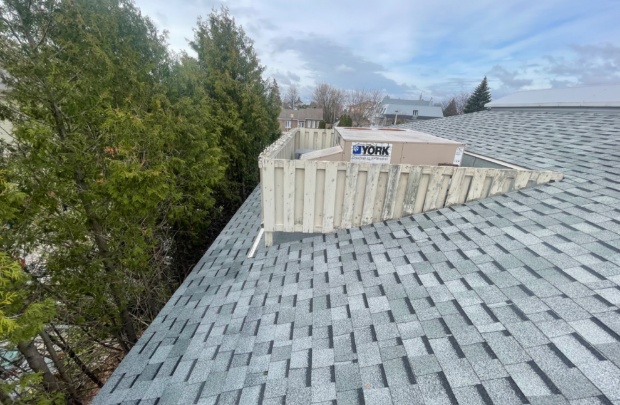A roof tirelessly protects the building underneath it, allowing us to live and work in comfort and safety. In Quebec, choosing the right roof pitch cannot be left to chance: in fact, choosing an appropriate slope means meeting precise standards, as our local climate regularly puts both roofs and homes to the test.
Whether you’re doing renovations or constructing a new building, choosing the right roof pitch means carefully assessing a variety of factors. Always refer to the latest rules and regulations when determining an appropriate pitch.
Here is some sound advice from our roofing experts to help you choose the right roof pitch for your building.
Roof pitch standards and regulations in Quebec
You may have already chosen a roof covering, but keep in mind that not all materials are suitable for any type of pitched roof. If the slope is too shallow, some roof coverings won’t be effective, and you may find yourself subject to sloped roof leaking.
According to the guidelines of the Régie du bâtiment du Québec, minimum roof pitch is important to guarantee efficient, long-lasting building protection. A building is generally considered to have a pitched roof when the slope is equal to or greater than 2:12 or 16.7%.
Roof pitch table

What is the minimum slope for an asphalt shingle roof?
When it comes to asphalt shingles, slope plays a decisive role not only in how your roof will look, but also in determining its performance and lifespan.
The minimum recommended slope for an asphalt shingle roof is generally 2:12, equivalent to a minimum of 16.7%. A slope of this degree will guarantee that water and melting snow drain off efficiently, preventing infiltration and potential moisture damage.
For further in-depth details on recommended roof slopes, contact our experts today!
What is a roof slope and how is it defined?
The slope of a roof is defined by the ratio of vertical height (rise) to horizontal length (spread), usually expressed by a ratio such as 4:12.
A so-called “standard” roof slope is 4:12 (usually), meaning that for every 12 horizontal units, the roof rises by 4 vertical units. This slope is sufficient to allow good water drainage and efficient snow removal, which are vital considerations in Quebec’s climate. However, standards can vary according to local conditions and the materials used, and sometimes a steeper slope will be required for optimal roof function and durability.
If you’re not sure how to calculate roof pitch, ask our experts!
Why install a pitched roof?
Before determining the slope of your future roof, you need to understand what is involved in building a pitched roof.
A steeper slope allows water to run off more easily. This prevents moisture and debris such as branches and leaves from accumulating on your roof and causing damage. Inside the building, steeply sloping roofs also offer more space for an attic.
But beware: steep-sloped roofs are harder to access when maintenance or roof inspection is required, and may pose a safety risk in these situations. This makes maintenance costs slightly higher for steeply pitched roofs than for gently-sloping or flat roofs.
Note also that the steeper the slope of a roof, the greater the surface area that has to be covered with a roof coating. As a general rule, the price of a new pitched roof will increase in proportion to its slope.
Factors to consider when choosing roof slope
Deciding on a roof pitch requires some planning as you will need to adapt your choice according to several important variables. The following are the main factors to consider:
Climate and environmental conditions
Local weather conditions play a big role in determining the ideal slope of a roof. In regions like Quebec where there is plenty of snow and rain, a steeper slope is preferable, as it will make it easy for precipitation to run off into gutters and allow for minimum accumulation of snow on the roof.
Roofing materials
The type of roof shingles you use will also impact your choice of slope. A steeper slope is necessary for some roofing materials to seal correctly, and to reduce the risk of leaks.
Architectural style
The design of your house can also influence your choice of roof pitch, as the slope should complement the architectural style of the building and help keep the structure in harmony with the surrounding environment.
Local rules and regulations
You should also be aware that some boroughs have specific roof slope regulations. These can vary according to the type of roof and building (heritage, commercial, etc.). Be sure to learn about and follow any rules specific to your area to avoid legal complications.
Functionality and use of space
Finally, you will need to choose an appropriate pitch according to how the roof will affect your living space. It is possible to choose a roof slope specifically to maximize the amount of living space under the roof, or one that will allow you to install specific rooftop technology, such as solar panels.
Detecting structural deformations on pitched roofs
Sloped roofs can be vulnerable to structural deformations that are hard to spot with the naked eye. Regular roof maintenance is vital to detect any structural problems in time to fix them. Proper roof inspection includes checking the state of your shingles, looking for wet areas that could be symptoms of leaks, and observing any sagging that could signal a structural problem.
You can rely on certified roofers to do regular, thorough inspections and extra verification following extreme weather conditions.
Ask Duro-Toit roofers for advice on choosing the right roof pitch
Simply put, choosing the right roof slope is extremely important. Every little detail matters when it comes to choosing a roof pitch that will meet local standards and protect your building well.
Knowing that there are so many factors to keep in mind, it might be a good idea to ask for advice from pitched roof experts like Duro-Toit. Our experienced roofers have the necessary qualifications to answer all your questions and guide you from start to finish.



